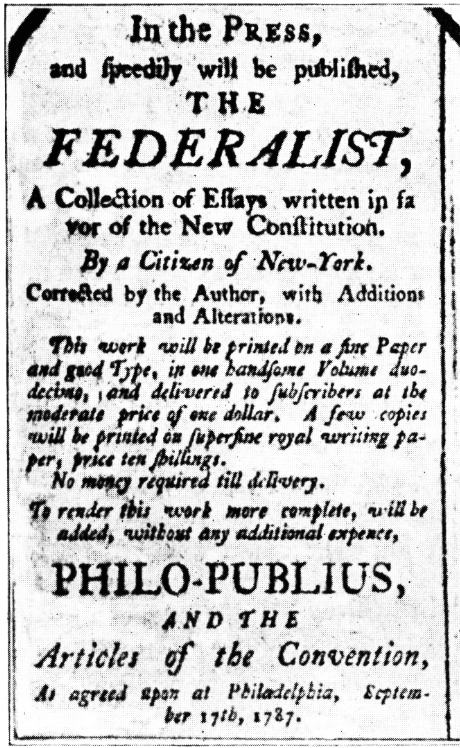Concurrent Jurisdiction - Federalist #82
In Federalist #82 Alexander Hamilton discusses the relationship between State and Federal Courts under the Constitution.
Federalist #82
Alexander Hamilton
July 2, 1788
In Federalist #82 Alexander Hamilton attempts to ease Anti-Federalist concerns regarding the State Courts.
Specifically, they feared that the Federal Courts would entirely assume the power of States.
Hamilton focuses most of this Paper on the legal idea of Concurrent Jurisdiction.
Concurrent Jurisdiction
Concurrent Jurisdiction is a complicated legal idea that essentially means two or more courts have the authority to hear cases in the same place.
While this usually means a person can choose the court in which they file a case, Hamilton is quick to point out that the Federal Jurisdiction is extremely limited.
The State Courts, he notes, would continue to wield the same authority they had before the Constitution was created except in certain, very specific, situations.
One Whole
Hamilton goes on to further assess the relationship between the Federal and State Courts by acknowledging that both would act as part of “ONE WHOLE” (caps are his).
He suggests that the State Courts would be “auxiliaries” to the Judicial Department of the Union.
This is interesting because, while Hamilton accepts that the State Courts would still exist and be important, he is in a fashion confirming the Anti-Federalist concern that the Constitution allows the Federal Courts to out-rule that of the State.
He does not say they are wrong, he just cites several examples as to why this new method is right.
Would you like to learn about the Justice Department?
Well, I’ll be reviewing the rest of the Federalist Papers in the coming weeks so make sure you subscribe to my email list.
Until then, check out the list of previous Papers here:






